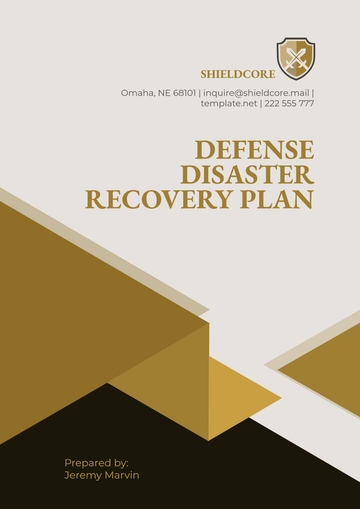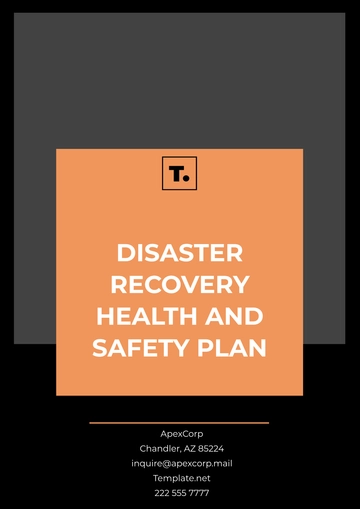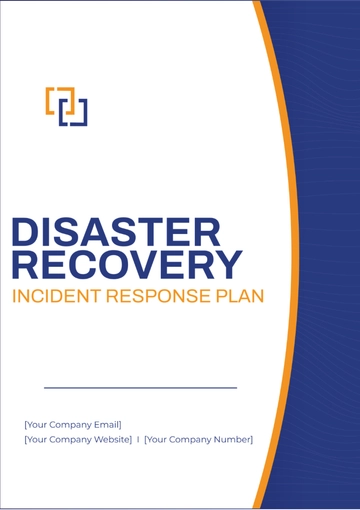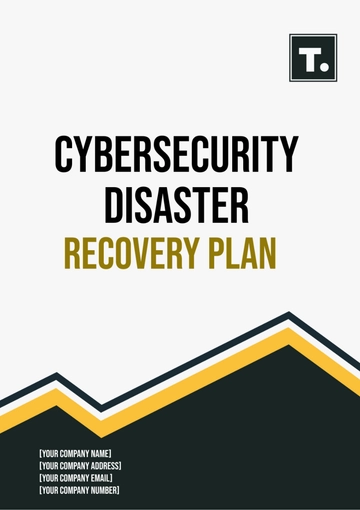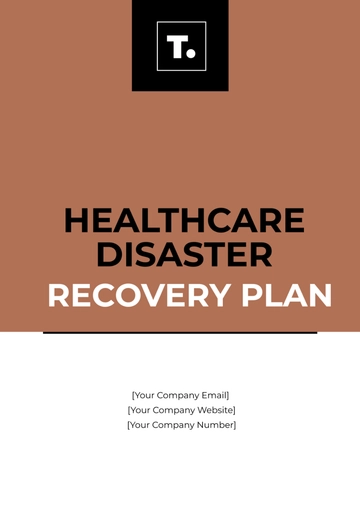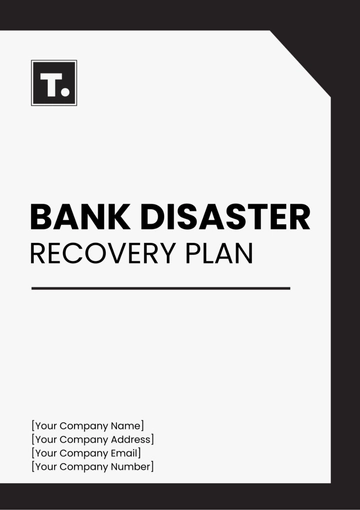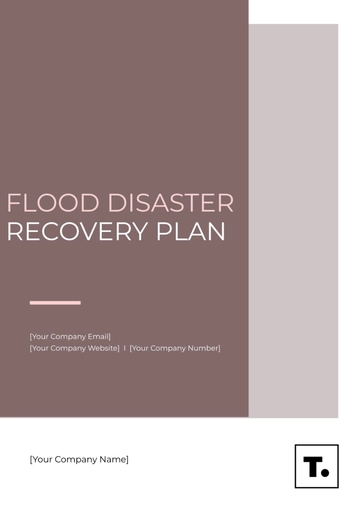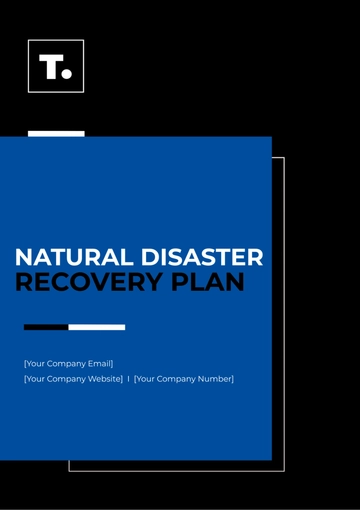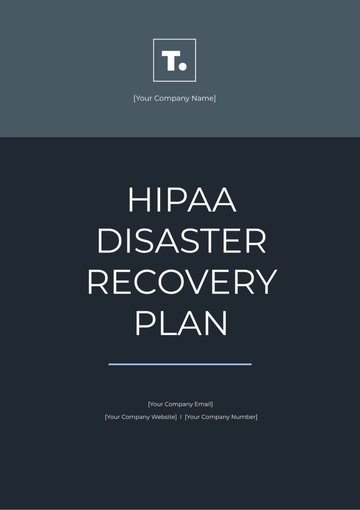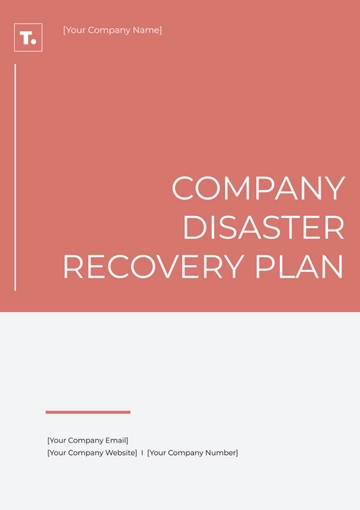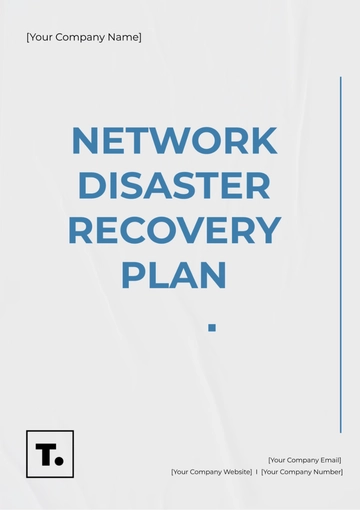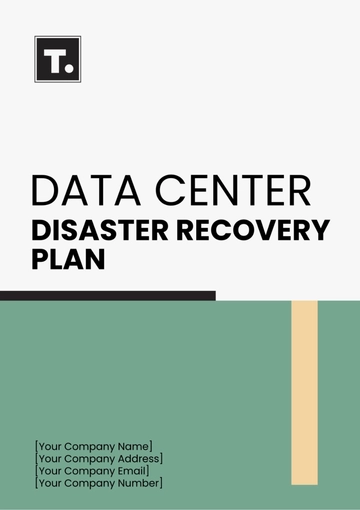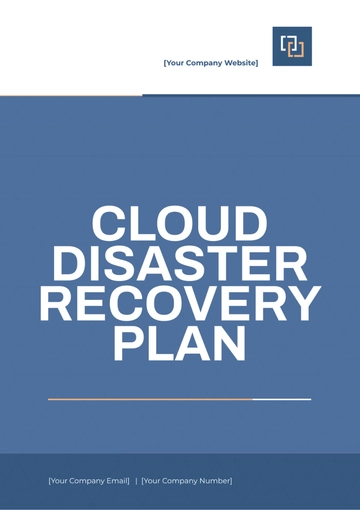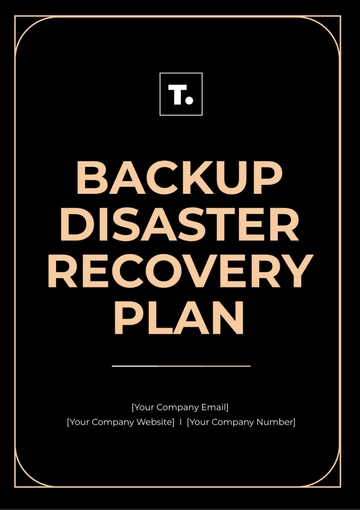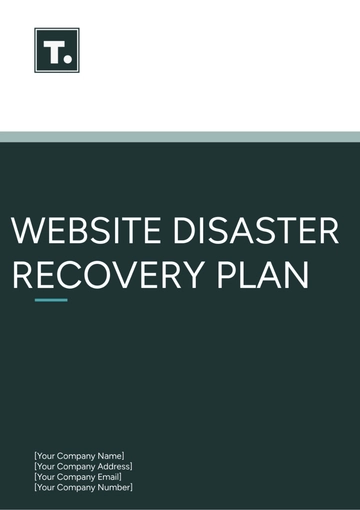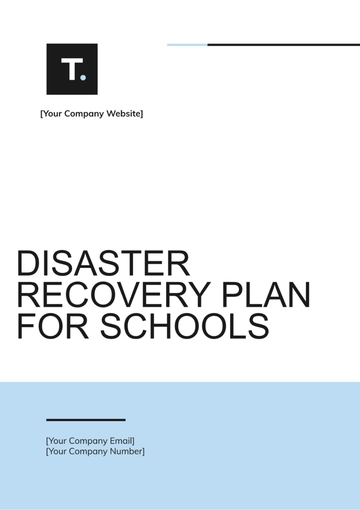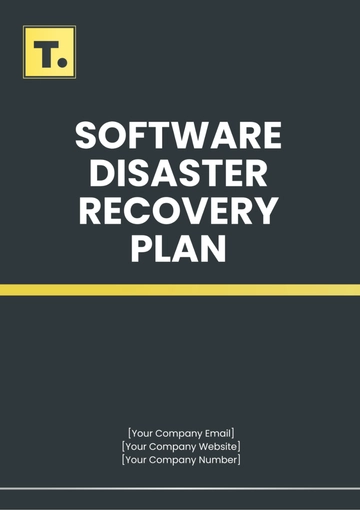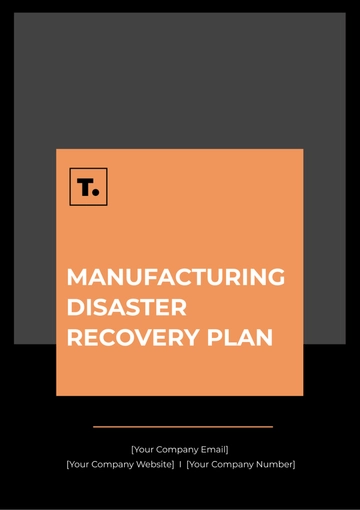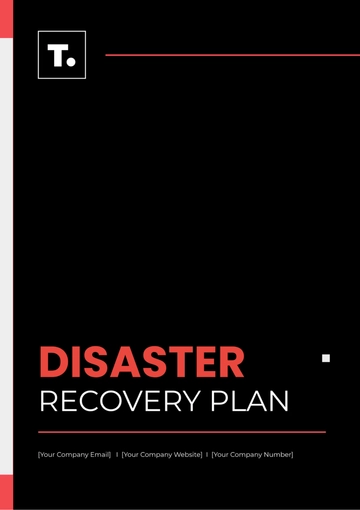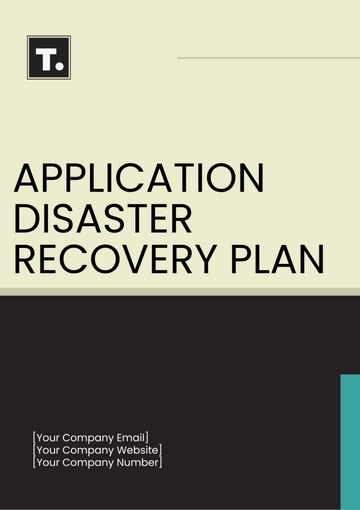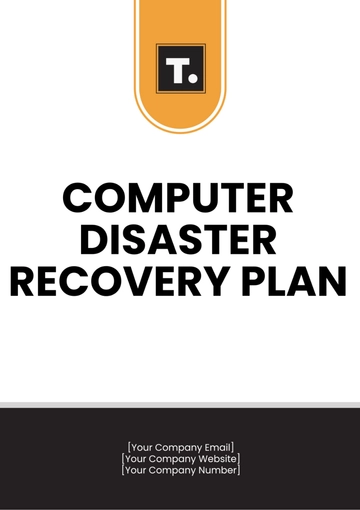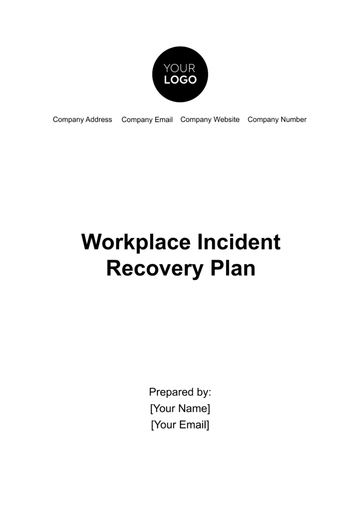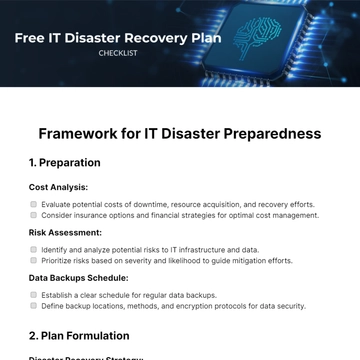Free Healthcare Disaster Recovery Plan
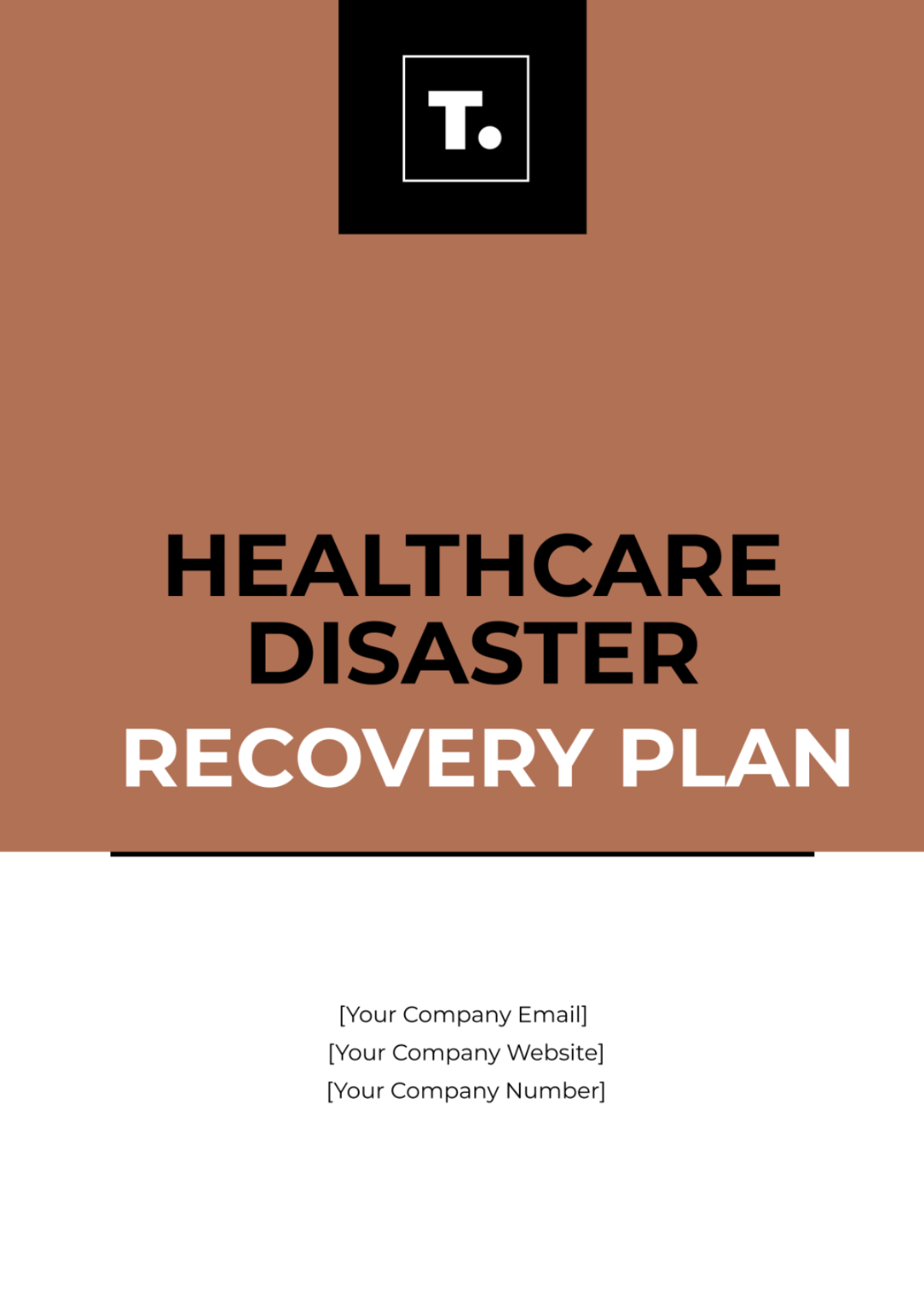
I. Introduction
A. Purpose
The purpose of this Healthcare Disaster Recovery Plan is to establish procedures and protocols to maintain and restore healthcare services during and after a disaster. This plan aims to protect the safety of patients and staff, secure medical assets, and resume critical healthcare functions as quickly as possible.
B. Objectives
Ensure the safety and well-being of patients and staff
Maintain continuity of critical healthcare services
Minimize downtime and financial impact
Ensure proper communication and coordination during recovery efforts
II. Roles and Responsibilities
A. Disaster Recovery Team
Role | Name | |
|---|---|---|
Disaster Recovery Lead | [Your Name] | [Your Company Email] |
Compliance Officer | [Compliance Officer Name] | [Compliance Officer Email] |
Healthcare Services Coordinator | [Healthcare Services Name] | [Healthcare Services Email] |
B. External Contacts
Entity | Contact Person | Contact Number |
|---|---|---|
Local Authorities | [Contact Person] | [Local Authorities Number] |
Medical Equipment Vendors | [Contact Person] | [Vendor Number] |
C. Responsibilities
Role | Responsibility |
|---|---|
Disaster Recovery Team Leader | Oversee execution of the plan, communicate with stakeholders |
Compliance Officer | Ensure adherence to regulatory requirements |
Healthcare Services Coordinator | Manage healthcare service continuity during a disaster |
III. Risk Assessment
A. Identified Risks
Potential risks that could impact healthcare services include:
Natural Disasters (e.g., earthquakes, floods)
Cyber Attacks
Pandemics
Power Failures
Human Errors
B. Vulnerability Assessment
Evaluate the vulnerability of IT systems, medical equipment, and facilities.
Identify weak points in physical and digital security.
Develop strategies to mitigate identified vulnerabilities.
C. Impact Analysis
The following table outlines the potential impact and likelihood of identified risks:
Risk | Impact | Likelihood |
|---|---|---|
Natural Disasters | High | Medium |
Cyber Attacks | High | High |
Pandemics | Medium | Low |
Power Failures | High | Medium |
Human Errors | Medium | High |
IV. Prevention and Mitigation
A. Preventive Measures
Install advanced security systems and backup power supplies.
Ensure regular maintenance and updates of IT systems and medical equipment.
Implement redundancy and backup solutions for critical data.
B. Staff Training and Awareness
Conduct regular disaster response drills.
Educate staff on disaster risks and safety procedures.
Distribute emergency contact lists and action plans.
V. Recovery Strategies
A. Damage Assessment
Conduct a thorough assessment of the damage to facilities, IT systems, and medical equipment.
Document and photograph damage for insurance purposes.
Prioritize recovery efforts based on the severity of the damage.
B. Restoration of Operations
Implement the restoration of critical healthcare functions.
Coordinate with vendors and service providers for repairs and replacements.
Monitor the progress of recovery efforts and adjust plans as necessary.
C. Post-Recovery Review
Evaluate the effectiveness of the Healthcare Disaster Recovery Plan.
Identify areas for improvement and update the plan accordingly.
Conduct a debrief with all relevant parties to gather feedback.
VI. Plan Testing and Maintenance
A. Testing
Regular testing of the Disaster Recovery Plan should be conducted to ensure effectiveness:
Quarterly drills to simulate various disaster scenarios
Annual full-scale testing involving all departments
Post-test review and adjustments to the plan
B. Maintenance
Ongoing maintenance of the plan is crucial:
Annual review and updates based on new risks or changes in the organization
Review and incorporate feedback from past disaster recovery efforts
VII. Appendices
A. Glossary of Terms
Define any technical or specialized terms used in the plan:
DRP: Disaster Recovery Plan
IT: Information Technology
EHR: Electronic Health Records
BCP: Business Continuity Plan
RTO: Recovery Time Objective
RPO: Recovery Point Objective
B. Document Revision History
Date | Version | Description of Changes | Author |
|---|---|---|---|
January 20, 2050 | 1.0 | Initial draft | [Your Name] |
July 1, 2050 | 1.1 | Updated contact information and risk assessment details | [Your Name] |
January 1, 2051 | 1.2 | Added new preventive measures and revised recovery strategies | [Your Name] |
- 100% Customizable, free editor
- Access 1 Million+ Templates, photo’s & graphics
- Download or share as a template
- Click and replace photos, graphics, text, backgrounds
- Resize, crop, AI write & more
- Access advanced editor
Safeguard patient care and healthcare operations with Template.net’s Healthcare Disaster Recovery Plan Template. This editable and customizable template, editable in our Ai Editor Tool, ensures your healthcare facility is prepared for any emergency, maintaining critical functions and compliance with healthcare regulations.
You may also like
- Finance Plan
- Construction Plan
- Sales Plan
- Development Plan
- Career Plan
- Budget Plan
- HR Plan
- Education Plan
- Transition Plan
- Work Plan
- Training Plan
- Communication Plan
- Operation Plan
- Health And Safety Plan
- Strategy Plan
- Professional Development Plan
- Advertising Plan
- Risk Management Plan
- Restaurant Plan
- School Plan
- Nursing Home Patient Care Plan
- Nursing Care Plan
- Plan Event
- Startup Plan
- Social Media Plan
- Staffing Plan
- Annual Plan
- Content Plan
- Payment Plan
- Implementation Plan
- Hotel Plan
- Workout Plan
- Accounting Plan
- Campaign Plan
- Essay Plan
- 30 60 90 Day Plan
- Research Plan
- Recruitment Plan
- 90 Day Plan
- Quarterly Plan
- Emergency Plan
- 5 Year Plan
- Gym Plan
- Personal Plan
- IT and Software Plan
- Treatment Plan
- Real Estate Plan
- Law Firm Plan
- Healthcare Plan
- Improvement Plan
- Media Plan
- 5 Year Business Plan
- Learning Plan
- Marketing Campaign Plan
- Travel Agency Plan
- Cleaning Services Plan
- Interior Design Plan
- Performance Plan
- PR Plan
- Birth Plan
- Life Plan
- SEO Plan
- Disaster Recovery Plan
- Continuity Plan
- Launch Plan
- Legal Plan
- Behavior Plan
- Performance Improvement Plan
- Salon Plan
- Security Plan
- Security Management Plan
- Employee Development Plan
- Quality Plan
- Service Improvement Plan
- Growth Plan
- Incident Response Plan
- Basketball Plan
- Emergency Action Plan
- Product Launch Plan
- Spa Plan
- Employee Training Plan
- Data Analysis Plan
- Employee Action Plan
- Territory Plan
- Audit Plan
- Classroom Plan
- Activity Plan
- Parenting Plan
- Care Plan
- Project Execution Plan
- Exercise Plan
- Internship Plan
- Software Development Plan
- Continuous Improvement Plan
- Leave Plan
- 90 Day Sales Plan
- Advertising Agency Plan
- Employee Transition Plan
- Smart Action Plan
- Workplace Safety Plan
- Behavior Change Plan
- Contingency Plan
- Continuity of Operations Plan
- Health Plan
- Quality Control Plan
- Self Plan
- Sports Development Plan
- Change Management Plan
- Ecommerce Plan
- Personal Financial Plan
- Process Improvement Plan
- 30-60-90 Day Sales Plan
- Crisis Management Plan
- Engagement Plan
- Execution Plan
- Pandemic Plan
- Quality Assurance Plan
- Service Continuity Plan
- Agile Project Plan
- Fundraising Plan
- Job Transition Plan
- Asset Maintenance Plan
- Maintenance Plan
- Software Test Plan
- Staff Training and Development Plan
- 3 Year Plan
- Brand Activation Plan
- Release Plan
- Resource Plan
- Risk Mitigation Plan
- Teacher Plan
- 30 60 90 Day Plan for New Manager
- Food Safety Plan
- Food Truck Plan
- Hiring Plan
- Quality Management Plan
- Wellness Plan
- Behavior Intervention Plan
- Bonus Plan
- Investment Plan
- Maternity Leave Plan
- Pandemic Response Plan
- Succession Planning
- Coaching Plan
- Configuration Management Plan
- Remote Work Plan
- Self Care Plan
- Teaching Plan
- 100-Day Plan
- HACCP Plan
- Student Plan
- Sustainability Plan
- 30 60 90 Day Plan for Interview
- Access Plan
- Site Specific Safety Plan

